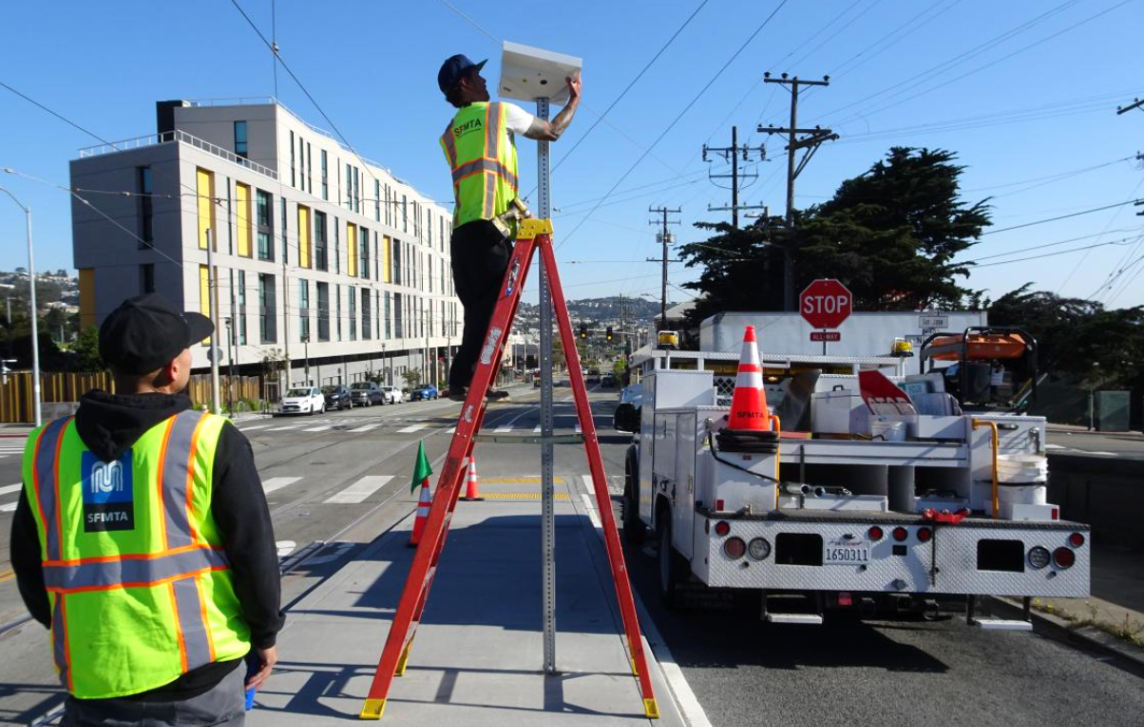🟧 A Critical Clinic You've Never Heard Of // Delivery Driver Dies
Plus: Bicyclist killed on Alemany Boulevard ID'd, and $180 million City College arts center gets the greenlight.
The SFMTA is moving forward with quick-build upgrades to improve safety and reliability along the light rail line.

The San Francisco Municipal Transportation Agency’s work to speed up the M-Ocean View light rail line while improving street safety is ramping up.
Crews will install a transit-only lane on the inner travel lane on San Jose Avenue between Niagara Avenue and Broad Street into a transit lane as early as June 2. Construction will occur between 7 a.m. and 6 p.m. for about two to three weeks.
It’s all part of the quick-build portion of the M-Ocean View Transit and Safety Project, which was approved in February 2024, said agency spokesperson Erica Kato.
“General traffic will be limited to one lane, which will discourage speeding and keep traffic moving at a calmer, but steady, speed,” Kato said. “It will also protect transit reliability by keeping the train moving in its own dedicated right-of-way.”
The project includes new, longer concrete boarding islands at transit stops where passengers currently walk between parked vehicles from the sidewalk to the train doors. Ahead of building the boarding islands, Kato said the agency will first use paint for these boarding areas that will require the removal of parking spaces.
Additionally, the agency is looking to install “quick-build versions” of boarding islands where possible.
Safer pedestrian crossings will be part of the quick-build implementation of the project. Kato told The Light that crews will install posts and paint at intersections at locations where there will eventually be concrete pedestrian and transit bulbs.
“Through paint and posts, these improvements slow turning vehicles, narrow crosswalks and improve safety for people walking or boarding the train,” Kato said.
Crews completed a new boarding island last December at San Jose and Niagara avenues near the Balboa Park BART station. Previously, riders got off the train directly into traffic at the old stop location. Additionally, the street design of the old stop did not allow the agency to widen the sidewalk or to build a safer boarding island.

Instead, the agency moved the stop to the south side of the intersection to build a new boarding island. At the new stop, crews installed a new solar-powered light that the SFMTA is testing as part of a pilot program.
“Riders have identified lighting at Muni stops as a top priority to improve their sense of safety,” Kato said.
She added that the solar lights are cost-effective, and if successful, the agency plans to roll out more of the lights citywide pending funding. A pair of transit stops were removed at San Jose and Mt. Vernon avenues last fall to improve reliability and travel times.
Full construction of the project is set to begin in mid-2026. The M serves about 18,000 riders a day, down from 30,000 daily riders before the pandemic.
We deliver neighborhood news, events and more every Thursday.